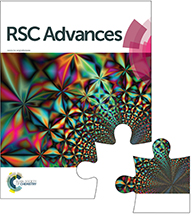Experimental and kinetic study of the conversion of waste starch into glycolic acid over phosphomolybdic acid
Abstract
The starch used to enhance the paper surface dissolves in water during the production process and forms pollutants that accumulate in water when old corrugated cardboard (OCC) is returned to a paper mill for pulping and reuse. At present, anaerobic fermentation is widely used in the paper industry to treat starch-containing wastewater, producing biogas energy, or oxidative decomposition, which is a huge waste of valuable starch resources. Phosphomolybdic acid (PMo12) is a highly selective catalyst for the oxidation of carbohydrates; therefore, PMo12 can be envisaged as a suitable catalyst to convert waste starch into glycolic acid, an important high added-value chemical. In this paper, the catalytic oxidation technology of PMo12 was explored to produce glycolic acid from starch contained in OCC papermaking wastewater, and the kinetics and influencing factors of the catalytic oxidation reaction were studied. The results indicated that the PMo12-catalyzed oxidation of starch followed a first-order reaction; the reaction rate constant increased with increasing the temperature, the apparent activation energy of starch to monosaccharide was 104.7 kJ mol−1, the apparent activation energies of starch and monosaccharide to humins were 126.5 and 140.5 kJ mol−1, and the apparent activation energy of monosaccharide to glycolic acid was 117.2 kJ mol−1. The yields of monosaccharide and glycolic acid were 80.7 wt% and 12.9 wt%, respectively, and the utilization of starch resources was about 90.0 wt% under the following reaction conditions: temperature, 145 °C; reaction time, 120 min; pH, 2. Therefore, the feasibility of the PMo12-catalyzed oxidation of starch to produce high value-added glycolic acid is demonstrated, which has theoretical guiding significance and potential application value for the clean production and resource utilization of waste starch in the OCC papermaking process.



 Please wait while we load your content...
Please wait while we load your content...